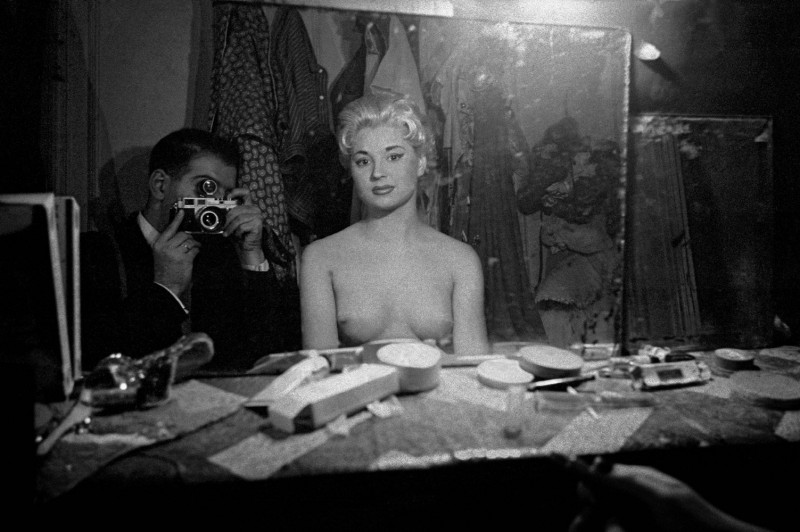Inside the Sphynx
Inside the Sphynx
Frank Horvat
October 9, 2015

Here is what I wrote about this job, many years later: “On the pavements of Place Pigalle, the uniformed doormen offered me a kind of ceremonious welcome, that turned very swiftly to disdain, as soon as I told them that I wanted to photograph the performers in their dressing rooms. At two o’clock in the morning, having suffered rejection from everywhere on the Place and in the surrounding alleyways, I decided to bring out the big guns. I slipped the doorman of the Sphynx a five thousand franc note (1950s francs, mind), even though the neon lights were a little dim and the man’s uniform somewhat worn out. It might have been these shortcomings that persuaded him to pocket the money and, without further ado, open the door to me.
The girls made me feel pretty welcome, possibly because there was such a dismal audience that night, that they were pleased to have a lone paparazzo paying them some attention. For my part, I fired off as many shots I could, as if I already knew that my luck wouldn’t hold. And, in fact, after I had used up four or five rolls, one of them called out ‘What d’you pay?’ It wasn’t an unreasonable request, but I had no way of satisfying it; so I pretended not to hear and beat a hasty retreat, before the others could join in. The next day, looking through my contact sheets, I realised that ‘I had a story’ and decided to go back to the Sphynx, encouraged by the fact that I had fallen for one of the performers, which may have been because of her unlikely combination of tiny breasts and large hips, which made me think of Baudelaire’s poem,
‘I thought I saw, brought together by some new design,
Antiope’s hip and the tits of a beardless youth.
So much did her waist draw attention to her haunches’
or possibly just because of her name, Yvette, which now strikes me as common but which, at the time, summed up for me all the charms of France. Sadly, the postman never rings twice. That evening, at the entrance of the Sphynx, I found a new Cerberus, who must have been given orders not to let in any photographers and who spurned any attempt at corruption.”
Frank Horvat+-
Horvat was born on April 28, 1928, in what was formerly Abbazia, Italy, and is today Opatija, Croatia. Following the completion of his studies in Milan, Horvat began to teach himself photography. After spending a year in London, he moved to Paris in 1955, where he lived until his passing on October 21, 2020. Till the late eighties, fashion and commercial photography remained his main areas of activity. After that, personal and free projects became more important. More

